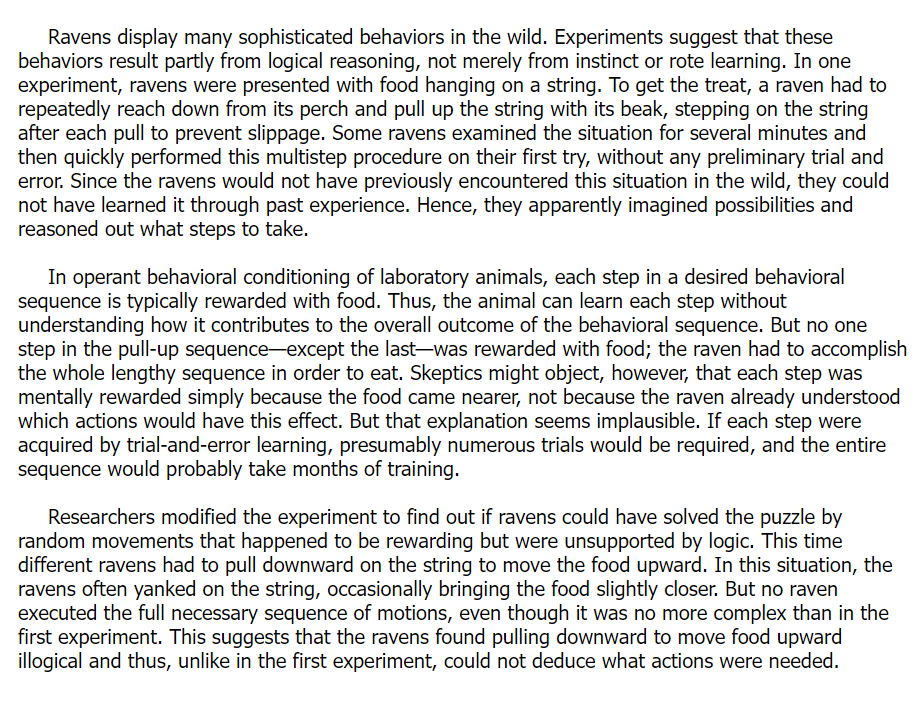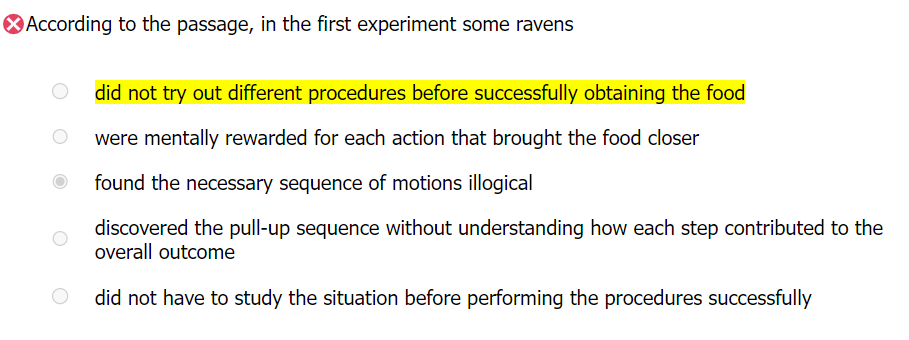Events & Promotions
|
|

GMAT Club Daily Prep
Thank you for using the timer - this advanced tool can estimate your performance and suggest more practice questions. We have subscribed you to Daily Prep Questions via email.
Customized
for You
Track
Your Progress
Practice
Pays
Not interested in getting valuable practice questions and articles delivered to your email? No problem, unsubscribe here.
- Nov 19
12:30 PM EST
-01:30 PM EST
Learn how Keshav, a Chartered Accountant, scored an impressive 705 on GMAT in just 30 days with GMATWhiz's expert guidance. In this video, he shares preparation tips and strategies that worked for him, including the mock, time management, and more - Nov 20
07:30 AM PST
-08:30 AM PST
Learn what truly sets the UC Riverside MBA apart and how it helps in your professional growth - Nov 20
01:30 PM EST
-02:30 PM IST
Learn how Kamakshi achieved a GMAT 675 with an impressive 96th %ile in Data Insights. Discover the unique methods and exam strategies that helped her excel in DI along with other sections for a balanced and high score. - Nov 22
11:00 AM IST
-01:00 PM IST
Do RC/MSR passages scare you? e-GMAT is conducting a masterclass to help you learn – Learn effective reading strategies Tackle difficult RC & MSR with confidence Excel in timed test environment - Nov 23
11:00 AM IST
-01:00 PM IST
Attend this free GMAT Algebra Webinar and learn how to master the most challenging Inequalities and Absolute Value problems with ease. - Nov 24
07:00 PM PST
-08:00 PM PST
Full-length FE mock with insightful analytics, weakness diagnosis, and video explanations! - Nov 25
10:00 AM EST
-11:00 AM EST
Prefer video-based learning? The Target Test Prep OnDemand course is a one-of-a-kind video masterclass featuring 400 hours of lecture-style teaching by Scott Woodbury-Stewart, founder of Target Test Prep and one of the most accomplished GMAT instructors.
Kudos
Bookmarks
Question 1
A
Be sure to select an answer first to save it in the Error Log before revealing the correct answer (OA)!
Difficulty:
 45%
(medium)
45%
(medium)
Question Stats:
58% (02:47) correct 42%
(02:46) wrong
42%
(02:46) wrong  based on 913
sessions
based on 913
sessions
History
Date
Time
Result
Not Attempted Yet
Question 2
A
Be sure to select an answer first to save it in the Error Log before revealing the correct answer (OA)!
Difficulty:
 75%
(hard)
75%
(hard)
Question Stats:
41% (01:11) correct 59%
(01:11) wrong
59%
(01:11) wrong  based on 947
sessions
based on 947
sessions
History
Date
Time
Result
Not Attempted Yet
Question 3
A
Be sure to select an answer first to save it in the Error Log before revealing the correct answer (OA)!
Difficulty:
 35%
(medium)
35%
(medium)
Question Stats:
65% (01:01) correct 35%
(01:00) wrong
35%
(01:00) wrong  based on 901
sessions
based on 901
sessions
History
Date
Time
Result
Not Attempted Yet
Question 4
E
Be sure to select an answer first to save it in the Error Log before revealing the correct answer (OA)!
Difficulty:
 65%
(hard)
65%
(hard)
Question Stats:
49% (01:12) correct 51%
(01:25) wrong
51%
(01:25) wrong  based on 877
sessions
based on 877
sessions
History
Date
Time
Result
Not Attempted Yet

GMAT-Club-Forum-crjmthit.png [ 186.33 KiB | Viewed 2958 times ]

GMAT-Club-Forum-cg9qv6gx.png [ 36.72 KiB | Viewed 2965 times ]

GMAT-Club-Forum-3g2dmv7j.png [ 54.65 KiB | Viewed 2966 times ]

GMAT-Club-Forum-ptnyf4sj.png [ 45.52 KiB | Viewed 2971 times ]

GMAT-Club-Forum-vitkerv4.png [ 72 KiB | Viewed 2962 times ]
Ravens display many sophisticated behaviors in the wild. Experiments suggest that these behaviors result partly from logical reasoning, not merely from instinct or rote learning. In one experiment, ravens were presented with food hanging on a string. To get the treat, a raven had to repeatedly reach down from its perch and pull up the string with its beak, stepping on the string after each pull to prevent slippage. Some ravens examined the situation for several minutes and then quickly performed this multistep procedure on their first try, without any preliminary trial and error. Since the ravens would not have previously encountered this situation in the wild, they could not have learned it through past experience. Hence, they apparently imagined possibilities and reasoned out what steps to take.
In operant behavioral conditioning of laboratory animals, each step in a desired behavioral sequence is typically rewarded with food. Thus, the animal can learn each step without understanding how it contributes to the overall outcome of the behavioral sequence. But no one step in the pull-up sequence—except the last—was rewarded with food; the raven had to accomplish the whole lengthy sequence in order to eat. Skeptics might object, however, that each step was mentally rewarded simply because the food came nearer, not because the raven already understood which actions would have this effect. But that explanation seems implausible. If each step were acquired by trial-and-error learning, presumably numerous trials would be required, and the entire sequence would probably take months of training.
Researchers modified the experiment to find out if ravens could have solved the puzzle by random movements that happened to be rewarding but were unsupported by logic. This time different ravens had to pull downward on the string to move the food upward. In this situation, the ravens often yanked on the string, occasionally bringing the food slightly closer. But no raven executed the full necessary sequence of motions, even though it was no more complex than in the first experiment. This suggests that the ravens found pulling downward to move food upward illogical and thus, unlike in the first experiment, could not deduce what actions were needed.
In operant behavioral conditioning of laboratory animals, each step in a desired behavioral sequence is typically rewarded with food. Thus, the animal can learn each step without understanding how it contributes to the overall outcome of the behavioral sequence. But no one step in the pull-up sequence—except the last—was rewarded with food; the raven had to accomplish the whole lengthy sequence in order to eat. Skeptics might object, however, that each step was mentally rewarded simply because the food came nearer, not because the raven already understood which actions would have this effect. But that explanation seems implausible. If each step were acquired by trial-and-error learning, presumably numerous trials would be required, and the entire sequence would probably take months of training.
Researchers modified the experiment to find out if ravens could have solved the puzzle by random movements that happened to be rewarding but were unsupported by logic. This time different ravens had to pull downward on the string to move the food upward. In this situation, the ravens often yanked on the string, occasionally bringing the food slightly closer. But no raven executed the full necessary sequence of motions, even though it was no more complex than in the first experiment. This suggests that the ravens found pulling downward to move food upward illogical and thus, unlike in the first experiment, could not deduce what actions were needed.
1. The main purpose of the passage is to
A. present evidence that ravens are capable of logical reasoning
B. describe various experiments designed to measure ravens’ mental ability
C. explain how ravens learn by trial and error
D. discuss the many sophisticated behaviors displayed by ravens
E. analyze the behavioral conditioning of ravens in a laboratory setting
A. present evidence that ravens are capable of logical reasoning
B. describe various experiments designed to measure ravens’ mental ability
C. explain how ravens learn by trial and error
D. discuss the many sophisticated behaviors displayed by ravens
E. analyze the behavioral conditioning of ravens in a laboratory setting
2. In the context of the passage, the primary function of the second paragraph is to
A. assess an alternative explanation of the ravens’ behavior in the first experiment
B. discuss classic behavioral conditioning of laboratory animals
C. call into question the conclusions of the researchers who conducted the experiments with the ravens
D. argue that animals can learn each step in a behavioral sequence without understanding how it contributes to the overall outcome of the sequence
E. present the main evidence in support of the claim that ravens are capable of logical reasoning
A. assess an alternative explanation of the ravens’ behavior in the first experiment
B. discuss classic behavioral conditioning of laboratory animals
C. call into question the conclusions of the researchers who conducted the experiments with the ravens
D. argue that animals can learn each step in a behavioral sequence without understanding how it contributes to the overall outcome of the sequence
E. present the main evidence in support of the claim that ravens are capable of logical reasoning
3. According to the passage, in the first experiment some ravens
A. did not try out different procedures before successfully obtaining the food
B. were mentally rewarded for each action that brought the food closer
C. found the necessary sequence of motions illogical
D. discovered the pull-up sequence without understanding how each step contributed to the overall outcome
E. did not have to study the situation before performing the procedures successfully
A. did not try out different procedures before successfully obtaining the food
B. were mentally rewarded for each action that brought the food closer
C. found the necessary sequence of motions illogical
D. discovered the pull-up sequence without understanding how each step contributed to the overall outcome
E. did not have to study the situation before performing the procedures successfully
4. The author of the passage would most likely conclude that a monkey, placed in a situation it had never been in before, was capable of logical reasoning if it
A. learned after only a few attempts the fastest route through a maze in order to reach an orange that was always placed at the end of the maze
B. carefully made several attempts in different ways to reach an orange displayed on a high ledge
C. had been trained to use three different tools in a complex sequence to open a locked metal box with an orange in it
D. noticed that when it pulled on a string in a certain direction an orange moved closer from the opposite direction
E. quickly unlatched several nested transparent plastic boxes on the first attempt in order to reach an orange in the innermost box
A. learned after only a few attempts the fastest route through a maze in order to reach an orange that was always placed at the end of the maze
B. carefully made several attempts in different ways to reach an orange displayed on a high ledge
C. had been trained to use three different tools in a complex sequence to open a locked metal box with an orange in it
D. noticed that when it pulled on a string in a certain direction an orange moved closer from the opposite direction
E. quickly unlatched several nested transparent plastic boxes on the first attempt in order to reach an orange in the innermost box
Attachment:
GMAT-Club-Forum-crjmthit.png [ 186.33 KiB | Viewed 2958 times ]
Attachment:
GMAT-Club-Forum-cg9qv6gx.png [ 36.72 KiB | Viewed 2965 times ]
Attachment:
GMAT-Club-Forum-3g2dmv7j.png [ 54.65 KiB | Viewed 2966 times ]
Attachment:
GMAT-Club-Forum-ptnyf4sj.png [ 45.52 KiB | Viewed 2971 times ]
Attachment:
GMAT-Club-Forum-vitkerv4.png [ 72 KiB | Viewed 2962 times ]
Kudos
Bookmarks
satvikd22
(E) contradicts the passage which clearly states that some ravens examined the situation for several minutes before performing the multistep procedure. Therefore, they did have to study the situation before successfully performing the procedures.
















